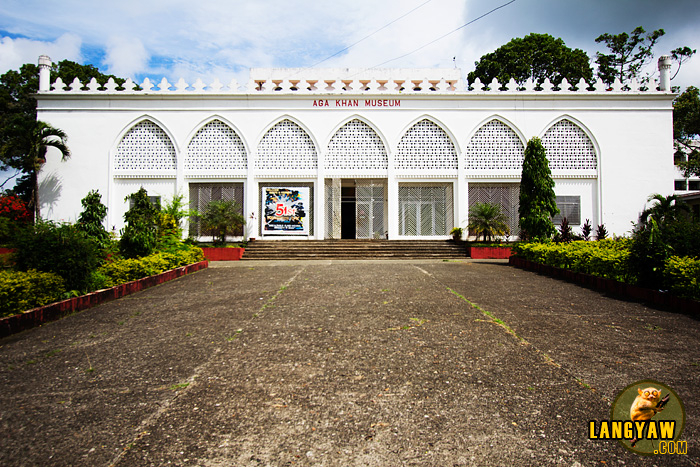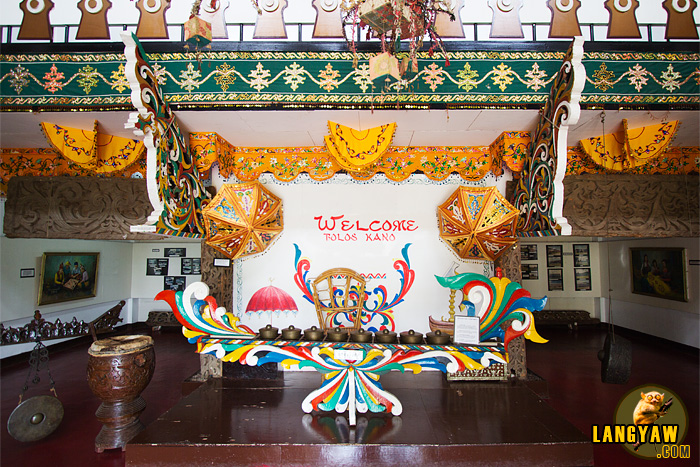
I’ve only scratched the surface of Marawi City, my second visit when I went back there last June as part of my 1828 KM travel around West Mindanao. But more importantly, I was looking for a torogan, a traditional Maranao royal house for a magazine feature.
Mindanao State University is the first stop for any such cultural explorations. While I got leads already, on who to contact about the torogan, I never passed the opportunity to visit the Aga Khan Museum Marawi, located at the same university campus.

The Aga Khan Museum Marawi is dedicated to the Muslim Philanthropist, His Highness Prince Karim Aga Khan IV whose donation made the construction of the space possible. It’s full name is actually Aga Khan Museum of Islamic Arts and started as the University Folk Arts Center opened in June 13, 1962 by its founder, Dr. Mamitua Saber. With the Aga Khan’s donation, the museum was opened to the public on March 23, 1969.
The exhibition spaces features interesting Maranao traditional art and artifacts, the history of Marawi, Maranao traditions as well as practices. In the second floor is the natural history collection plus some costumes and wear.

The current state of the Aga Khan Museum Marawi is not really good but the artifacts and old images of Marawi during the American colonial period are quite interesting. While looking around the items, it was also with sadness that many of these have been lost.
The Hindu inspired mosque architecture, with its tapered layers is said to have been lost forever. That also includes the wooden room constructed above the torogan for the Sultan’s daughter wherein nobody is allowed to see. There were also huge parts of the butterfly end beams called the panolong in beautiful okir (a traditional Maranao carving).
Getting there: From Iligan City are several jeepneys and vans at the South Bound Bus and Jeepney Terminal. Once in Marawi City, tricycles are the most convenient mode of transportation. Just tell the driver you’re going to MSU if they don’t know where Aga Khan Museum is. Then ask from there.
related kay chaka khan? LOL
Yup. Sample nga ng kanta ron. Lol!
wonderful colors talaga basta Islamic traditional historical items. The structures remind me of a bit of Chinese touch to it. hmmm…